Superfund Sites in Reuse in Florida
If you are having trouble viewing the map in your browser, click the 'View larger map' link below
AGRICO CHEMICAL CO.
The 30-acre Agrico Chemical Co. Superfund site is in Pensacola, Florida. Agrichemical production operations took place on-site from 1891 to 1975. Facility operations contaminated groundwater and soil. EPA added the site to the National Priorities List (NPL) in 1989. Cleanup actions by the site’s potentially responsible parties (PRPs) included soil removal, solidification, stabilization and capping. PRPs also monitored groundwater and surface water and put groundwater use restrictions in place. Groundwater monitoring is ongoing. A water line connects homes and businesses to the public water supply. Parts of the site are in ecological reuse as a pollinator habitat. The habitat area includes more than 1,700 plants.
Last updated September 2024
As of December 2024, the EPA did not have economic data related to on-site businesses, or economic data were not applicable due to site use. For additional information click here.
For more information:
- Ready for Reuse: Former Pensacola Industrial Property (PDF)
- Supporting the Health of Pollinators: Butterfly Habitat at the Agrico Chemical Company Superfund Site (PDF)
- Superfund Site Profile Page
AIRCO PLATING CO.
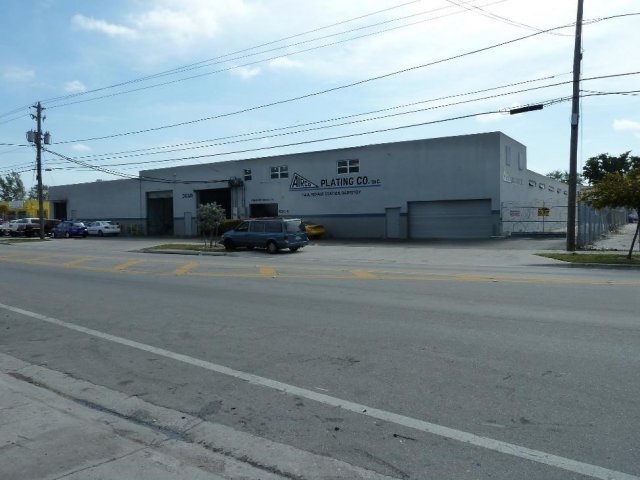
The 2-acre Airco Plating Co. Superfund site is in Miami, Florida. A metal plating facility has been on-site since 1955. Waste-handling practices contaminated soil and groundwater with metals and hazardous chemicals. The main threat posed by the site is the release of contaminants into the Biscayne Aquifer, the main source of drinking water for Miami-Dade County. EPA added the site to the National Priorities List (NPL) in 1990. EPA’s 1993 cleanup plan included extracting vapors from contaminated soil, capping remaining contaminated soil and treating groundwater. Land use restrictions make sure site activities do not damage the protective cap or affect the groundwater treatment system. Site monitoring is ongoing. The site is part of a commercial and industrial area. The metal plating company remains active on-site. It provides plating services to aviation, aerospace and commercial industries. An outdoor awning construction business is also adjacent to the main site.
Last updated September 2024
As of December 2024, the EPA had data on 2 on-site businesses. These businesses employed 42 people and generated an estimated $4,960,000 in annual sales revenue. For additional information click here.
For more information:
- Sites in Continued Use: Miami Industrial Property (PDF)
- Reuse and the Benefit to Community: Airco Plating Co. Superfund Site (PDF)
- Superfund Site Profile Page
ALARIC AREA GW PLUME
The 1.7-acre Alaric Area GW Plume Superfund site is in the Orient Park area of Tampa, Florida. It includes the former Alaric property and several adjacent lots where contaminated groundwater migrated. Starting in the early 1970s, a variety of businesses were on-site. Their operations and waste-handling practices resulted in environmental contamination. Soil and groundwater monitoring by EPA and the Florida Department of Environmental Protection in the late 1990s found significant amounts of chlorinated solvents in soil and groundwater. EPA added the site to the National Priorities List (NPL) in 2000. Cleanup included removal of the shallow soil contamination and septic tank believed to be the main source of chlorinated solvents and treatment of contaminated soil using chemical oxidation. It also included thermal heating and pumping and treatment of contaminated groundwater. Thermal heating of source-zone soils to remediate areas with high solvent concentrations followed these cleanup actions. The final phase of soil treatment finished in 2017. After site restoration finished in 2018, a new owner purchased the site property. The owner sought to rehabilitate and lease the vacant metal building on-site. EPA worked closely with the owner to support reuse that would ensure the protectiveness of the remedy. EPA did a vapor intrusion investigation and put a vapor mitigation system in place. EPA put in a soil vapor extraction (SVE) system just above the surficial aquifer to clean up contaminated gas vapors trapped beneath the building slab. Today, an auto mechanic company leases the 5,000-square-foot building. The company uses the property for office space and equipment storage and Postal Service vehicle maintenance. EPA continues to monitor groundwater temperature and the decline of contaminant levels after thermal treatment of source areas.
Last updated September 2024
As of December 2024, the EPA did not have economic data related to on-site businesses, or economic data were not applicable due to site use. For additional information click here.
For more information:
- Sites in Reuse: Alaric Area Groundwater Plume Superfund Site in Tampa, Florida (PDF)
- Superfund Site Profile Page
ALPHA CHEMICAL CORP.

The 32-acre Alpha Chemical Corp. Superfund site is in Kathleen, Florida. Since 1967, a plant on-site has made polyester resin for fiberglass manufacturers. From 1967 to 1976, operators sent wastewater containing small amounts of volatile organic compounds into unlined ponds on-site. EPA added the site to the National Priorities List (NPL) in 1983. Cleanup activities included placing a protective cap over the former unlined pond area and monitoring surface water and groundwater. After cleanup, EPA took the area off the NPL in 1995. Monitoring results show that the site’s remedy is protective of human health and the environment. It is compatible with unrestricted use. The plant remains active on-site.
Last updated September 2024
As of December 2024, the EPA had data on one on-site business. This business employed 90 people and generated an estimated $67,690,000 in annual sales revenue. For additional information click here.
For more information:
ANACONDA ALUMINUM CO./MILGO ELECTRONICS CORP.
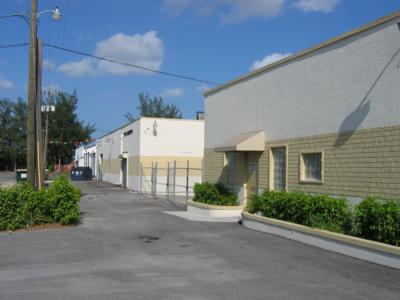
The 3-acre Anaconda Aluminum Co./Milgo Electronics Corp. Superfund site is in Miami, Florida. From 1957 to 1983, Anaconda Aluminum Company and Milgo Electronics ran electroplating operations at the site. Improper disposal of liquid wastes led to sediment, soil, surface water and groundwater contamination. In 1987, EPA’s investigations found that the contaminated groundwater plume reached the Biscayne Aquifer, the primary source of drinking water for South Florida. EPA added the site to the National Priorities List (NPL) in 1990. Cleanup activities included the excavation and proper disposal of contaminated soil. After cleanup, EPA took the site off the NPL in 1998. The former Anaconda Aluminum Company facility is now a salvage yard. The former Milgo Electronics facility now hosts several commercial and industrial businesses including a lumber store, an auto body shop and a woodworking machinery distributor.
Last updated September 2024
As of December 2024, the EPA had data on 3 on-site businesses. These businesses employed 5 people and generated an estimated $1,488,560 in annual sales revenue. For additional information click here.
For more information:
ANODYNE, INC.

The 4-acre Anodyne, Inc. Superfund site is in Miami Gardens, Florida. It overlies the Biscayne Aquifer, which is the primary source of drinking water for Miami-Dade and Broward counties. From 1960 to 1978, Anodyne, Inc. ran a variety of industrial operations on-site. Consumer products made at the facility included decorative trim, control panels and equipment dials. Operators stored chemicals in above-ground storage tanks on-site and disposed of wastes directly on the ground outside. Improper storage and disposal practices contaminated groundwater and soil. EPA added the site to the National Priorities List (NPL) in 1990. Cleanup included removal and off-site disposal of contaminated soil. In 2016, EPA updated the remedy to address groundwater contamination. EPA started a pilot study in 2017 to treat concentrated areas of contamination in the groundwater. The study focused on enhanced biological treatment. Groundwater treatment and monitoring are ongoing. EPA Region 4’s Prospective Purchaser Inquiry (PPI) process supported the reuse of the site. The PPI process offers prospective purchasers fast, accurate and comprehensive information. Prospective purchasers are then able to make timely purchasing decisions. In December 2021, the site was among those selected by EPA to receive cleanup funding under the Bipartisan Infrastructure Law (BIL). With this funding, EPA is already initiating work on backlogged remedial construction projects and accelerating cleanups at NPL sites. Today, commercial and industrial land uses are permitted on-site. Residential land uses, schools and daycare facilities are not permitted. The site is part of the Sunshine State Industrial Park. An international global security company operates out of Anodyne, Inc.’s former facilities.
Last updated September 2024
As of December 2024, the EPA did not have economic data related to on-site businesses, or economic data were not applicable due to site use. For additional information click here.
For more information:
ARKLA TERRA PROPERTY
The Arkla Terra Property Superfund site is in Thonotosassa, Florida. From 1976 to 2006, several companies repaired and refurbished containers and underground storage tanks on-site. Operators used solvents to clean the tanks. In 2000, the Florida Department of Environmental Protection (FDEP) found that these activities had contaminated soil and groundwater. EPA added the site to the National Priorities List (NPL) in 2009. EPA began cleanup activities in 2011. In February 2013, EPA finished treating the source area with heat to remove contamination from soil. EPA selected the final cleanup plan in August 2018. To provide a permanent source of drinking water for the community, FDEP provided funding to Hillsborough County to extend water lines to the affected area and connect over 100 homes to the public water supply. In 2018 and 2019, EPA connected three more residential properties and two commercial properties to the public water supply. Groundwater monitoring is ongoing. After a community meeting to discuss the cleanup, a prospective purchaser contacted EPA about part of the site. Through its Prospective Purchaser Inquiry (PPI) Service, EPA made sure the proposed reuse would be compatible with the remedy. EPA has put land use and engineering controls on the site to prohibit potable groundwater use and protect the public from exposure to on-site vapors. The new owner purchased the property in 2019. Today, the owner leases parts of the property to commercial businesses. They include an electrical company, a subcontractor for Tampa Electric and a construction company. The owner is exploring more reuse options for the area.
Last updated September 2024
As of December 2024, the EPA had data on 2 on-site businesses. These businesses employed 48 people and generated an estimated $6,285,000 in annual sales revenue. For additional information click here.
For more information:
B&B CHEMICAL CO., INC.

The 4.5-acre B&B Chemical Co., Inc. Superfund site is in Hialeah, Florida. In 1963, B&B Tritech (B&B) began making and mixing industrial cleaning products at the site. Many chemical containers rusted and broke, spilling their contents onto the ground. In 1981, construction workers working on a water pipe near the site reported skin irritation and burns. In 1985, an EPA investigation found that facility operations and waste handling practices at the site had contaminated soil and groundwater. EPA added the site to the National Priorities List (NPL) in 1990. Cleanup included groundwater treatment and monitoring. Groundwater now meets state and federal drinking water standards. Land use restrictions prevent potential human exposure to potential contaminants below the pavement. EPA took the site off the NPL in 2014. B&B was active on-site until November 2018. Izzy Venture, LLC acquired the site’s three properties. The site remains in industrial use.
Last updated September 2024
As of December 2024, the EPA had data on one on-site business. The EPA did not have further economic details related to this business. For additional information click here.
For more information:
BEULAH LANDFILL
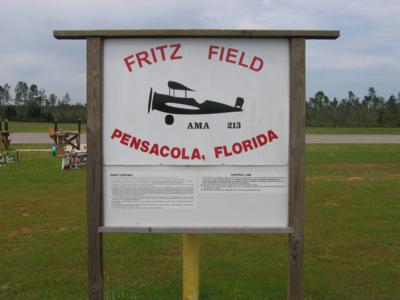
The 101-acre Beulah Landfill Superfund site is in Escambia County, Florida. Escambia County ran a landfill on-site from 1966 to 1984. The northern section of the landfill received only solid waste. It closed in 1975. The southern section received solid waste, domestic septage and wastewater treatment sludge. A state investigation in 1987 found that site activities had contaminated nearby soil, sediments, surface water and groundwater. EPA added the site to the National Priorities List (NPL) in 1990. The cleanup approach is to close the landfill under the Florida Department of Environmental Protection landfill closure program. The site’s responsible party, Escambia County, is doing all required cleanup activities under the state program. Landfill closure included capping, monitoring groundwater and removing contaminated soil outside the capped areas. Land use controls limit future site development. In 1998, EPA deleted the site from the NPL. Groundwater monitoring is ongoing under the state program. After reuse discussions in the community, Northwest Florida Modelers, a local model airplane club, reached an agreement with Escambia County to use the site for flying model airplanes. Today, part of Beulah Landfill is known as Fritz Field, a model airplane flying park. Funds from the facility help pay for the maintenance of Fritz Field. This former landfill is now a valuable asset that provides open-space recreation opportunities for the community.
Last updated September 2024
As of December 2024, the EPA did not have economic data related to on-site businesses, or economic data were not applicable due to site use. For additional information click here.
For more information:
BMI-TEXTRON

The 3.4-acre BMI-Textron Superfund site is in Lake Park, Florida. BMI began manufacturing operations in Tri-City Industrial Park in 1969. Textron purchased BMI in 1981. BMI-Textron made chromium-backed glass plates used in electronic parts. Operators put liquid process waste containing cyanide in on-site ponds and drain fields. In 1984, a state investigation found that site activities had contaminated soil and groundwater. The business closed in early 1986. The site’s potentially responsible party cleaned up contaminated soil in 1984 and 1990. EPA added the site to the National Priorities List (NPL) in 1990. Cleanup activities also included groundwater monitoring and site access restrictions. After cleanup, EPA took the site off the NPL in November 2002. Commercial and light industrial use continued at the site during cleanup. Today, an aerospace parts manufacturing facility is in the former BMI-Textron building. The company makes turbine engine parts for industrial gas turbines and flight turbines. Other businesses on-site include plumbing and construction contractors, a cleaning company and a scrap-metal recycling company.
Last updated September 2024
As of December 2024, the EPA had data on 5 on-site businesses. These businesses employed 75 people and generated an estimated $12,223,360 in annual sales revenue. For additional information click here.
For more information:
- Site Redevelopment Profile for the BMI-Textron and Trans Circuits, Inc. Superfund Sites (PDF)
- Sites in Continued Use: Lake Park Industrial Property (PDF)
- Reuse and the Benefit to Community: BMI-Textron and Trans Circuits, Inc. Superfund Sites (PDF)
- Superfund Site Profile Page
BROWN'S DUMP
The Brown’s Dump Superfund site occupies about 250 acres in Jacksonville, Florida. The city of Jacksonville (the City) used the area as a landfill for incinerator ash from the 1940s to 1953. When the landfill closed, the Duval County School Board acquired the site property. In 1995, the school board built an elementary school over the former landfill. The elementary school closed in 2001 in response to an EPA inspection that determined that cleanup actions would be required to address lead contamination from incinerated ash buried at the landfill. The inspection also found more contaminated areas. These areas included a Jacksonville Electric Authority (JEA) electrical substation and 216 homes. EPA did not add the site to the National Priorities List (NPL) but considers it an NPL-caliber site and is addressing it through the Superfund Alternative Approach. The City agreed to lead cleanup activities. The cleanup plan, developed in 2006, required the remediation of contaminated soils and replacing the excavated areas with clean soil. Cleanup allowed residents to continue living safely in their homes. For areas where contaminated soil was not accessible or access was not granted by the property owner, the City supplemented cleanup activities with institutional controls that prevent potential exposure to residual contamination. Current site uses include single-family homes and multi-unit apartments on areas around the original landfill. JEA also continues to operate the electrical substation on 2 acres of the site. In 2010, EPA’s Superfund Job Training Initiative program took place at the site. It provided environmental remediation training and careers for 26 people who live in the community and are affected by the site. In 2012, White Harvest Farms, an 11-acre urban farm run by the Clara White Mission, created a learning facility on-site. Children have hands-on experiences with agriculture and earth science. Produce from the farm is sold at an on-site farmers market where proceeds fund education opportunities and provide meals for disadvantaged residents in the Jacksonville area. A daycare and church are also on-site.
Last updated September 2024
As of December 2024, the EPA had data on 8 on-site businesses. These businesses employed 13 people and generated an estimated $2,336,080 in annual sales revenue. For additional information click here.
For more information:
- Reuse and the Benefit to Community: A Beneficial Effects Economic Case Study for the Brown’s Dump Superfund Alternative Approach Site (PDF)
- USDA's #Fridaysonthefarm: Growing Hope at Clara White Mission Story Map
- Sites in Reuse: Jacksonville Ash and Brown's Dump Superfund Alternative Sites (PDF)
- Press Release: Excellence in Site Reuse Award
- Region 4 Excellence in Site Reuse Award: Brown's Dump
- Superfund Site Profile Page
CABOT/KOPPERS
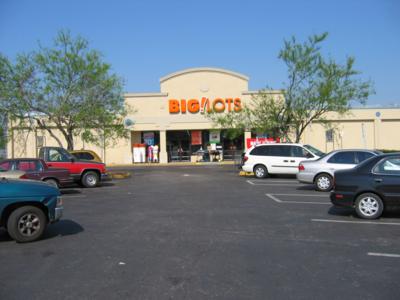
The 140-acre Cabot/Koppers Superfund site is in Gainesville, Florida. The Koppers property includes 90 acres on the western part of the site. The Cabot property covers 50 acres on the eastern part of the site. The Koppers property includes the area where a wood-treatment facility was between 1916 and 2009. The Cabot property includes areas where tar, turpentine and charcoal were made from 1908 to 1967. Site operations led to contamination of soil and groundwater. EPA added the site to the National Priorities List (NPL) in 1984. Cleanup included pumping and treating contaminated groundwater; this remedy has been in operation for over 20 years. Some of the treated water is in use for irrigation at the Koppers property. EPA’s Superfund Redevelopment Program (SRP) supported a regional support project for the site in 2010 and 2011. The project’s reuse assessment outlines community goals and reuse considerations. It also identifies ways to coordinate cleanup and redevelopment activities. EPA updated the remedy in 2011, requiring more cleanup of soils and groundwater by the potentially responsible parties. They completed the remedy for the Cabot property in 2020. Remedy construction at the Koppers property is ongoing. A shopping mall, a performing arts theatre, a car dealership and several other businesses are on the Cabot property. The Koppers property is not in use. EPA continues to support local efforts to explore reuse options for the site. In 2019, SRP provided support for an expanded reuse assessment for the site and surrounding area based on updated reuse plans. The assessment identified potential for recreational uses, mixed commercial and residential uses, and light industrial uses at site properties.
Last updated September 2024
As of December 2024, the EPA had data on 19 on-site businesses. These businesses employed 193 people and generated an estimated $49,997,050 in annual sales revenue. For additional information click here.
For more information:
- Sites in Continued Use: Gainesville Commercial Property (PDF)
- Cabot Carbon/Koppers, Gainesville, FL - Reuse Assessment (PDF)
- Superfund Site Profile Page
CALLAWAY & SON DRUM SERVICE
The 9.5-acre Callaway & Son Drum Services Superfund site is in Polk County, Florida. From 1977 to 1991, a 55-gallon drum refurbishing and resale facility was active on-site. Drums were cleaned, sandblasted and painted, and a percolation pond received rinse from the drum-cleaning process. Facility operations contaminated groundwater, soil and surface water. Operations stopped in 1991 when the facility came to the Florida Department of Environmental Protection's attention. EPA added the site to the National Priorities List (NPL) in 2000. In 2001, EPA removed about 2,500 empty and partially empty drums and disposed of them off-site. Polk County worked with EPA to remove tires from the site. Further investigations found that contaminants were below levels of concern. EPA found no further action was necessary and took the site off the NPL in 2009. A landscaping business is active on-site.
Last updated September 2024
As of December 2024, the EPA had data on one on-site business. This business employed 3 people and generated an estimated $244,100 in annual sales revenue. For additional information click here.
For more information:
CASCADE PARK GASIFICATION PLANT
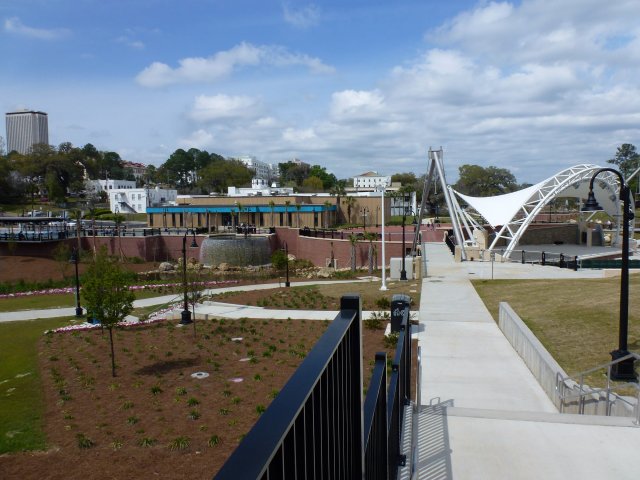
The 10-acre Cascade Park Gasification Plant site is in Tallahassee, Florida. From 1895 until the mid-1950s, the city of Tallahassee (the city) ran a manufactured gas plant (MGP) on-site. The MGP turned coal into gas to provide light and heat for city residents. A city-owned landfill opened nearby in the 1920s (Cascade Landfill). It accepted waste from the MGP. In 1987, the state of Florida and EPA found that site activities and waste management practices had contaminated soil, sediment and groundwater. The city and the Florida Department of Environmental Protection worked with EPA on a long-term removal action. Cleanup activities included removing contaminated soil, capping residual contamination and monitoring groundwater. The community made a reuse plan to manage stormwater, create a public park, preserve local natural resources and commemorate the site’s history. In 2008, EPA Region 4 recognized the community’s planning efforts with its Excellence in Site Reuse award. In April 2010, the city and Blueprint 2000, a local intergovernmental agency, continued the removal action and began construction of the 24-acre Cascades Park. The park opened in 2014. It includes the MGP property. Over 1,000 people attended the opening ceremony. Park features include 2.3 miles of trails, playgrounds, a waterfall, interactive fountains, a memorial to a displaced African American community, a war memorial, a restaurant and cafe, and an amphitheater for concerts and community events. The park also serves as a stormwater management system, providing flood relief from large storms. In February 2019, EPA completed the groundwater investigation. EPA found that the cleanup was functioning as intended and the area no longer posed a risk to human health and the environment. EPA documented its findings in a no-further-action Record of Decision.
Last updated September 2024
As of December 2024, the EPA had data on 2 on-site businesses. These businesses employed 9 people and generated an estimated $724,000 in annual sales revenue. For additional information click here.
For more information:
- Reuse and the Benefit to Community: A Beneficial Effects Economic Case Study for the Cascade Park Gasification Plant (PDF)
- Sites in Reuse: Cascade Park Gasification Plant Site (PDF)
- Region 4 Excellence in Site Reuse Award: Cascade Park Gasification Plant
- Superfund Site Profile Page
CHEMFORM, INC.
The 4-acre Chemform, Inc. Superfund site is in Pompano Beach, Florida. From 1967 to 1985, a facility on-site made metal parts for the aerospace industry and electrochemical machines for other industries. A 1985 assessment found that facility activities and waste disposal practices had contaminated soil and groundwater. EPA added the site to the National Priorities List (NPL) in 1989. EPA, the Florida Department of Environmental Protection (FDEP) and the site’s potentially responsible parties (PRPs) worked together on site remedial actions. Cleanup activities included removing and properly disposing of contaminated soil, containerized wastes, debris and tank contents. Contractors also put in a groundwater monitoring system. After cleanup, EPA took the site off the NPL in 2000. Recent groundwater sampling data indicate that arsenic and vinyl chloride remain in a few wells at concentrations above EPA and state drinking water standards. Property use restrictions and the availability of municipal water supplies protect people from drinking contaminated groundwater. A wholesale produce distribution center has been active on-site since 2010.
Last updated September 2024
As of December 2024, the EPA had data on one on-site business. This business employed 10 people and generated an estimated $6,210,000 in annual sales revenue. For additional information click here.
For more information:
CITY INDUSTRIES, INC.
The 1-acre City Industries, Inc. Superfund site is in Orlando, Florida. From the early 1970s to 1983, the City Chemical Company (also known as City Industries), a hazardous waste management facility, was on-site. Improper disposal practices led to soil and groundwater contamination. In 1983, after a state order to cease operations, City Chemical Company abandoned the site. It left behind barrels of hazardous waste and thousands of gallons of sludge in large on-site holding tanks. EPA added the site to the National Priorities List (NPL) in 1989. The Florida Department of Environmental Protection, EPA and responsible parties led cleanup activities at the site in 1983 and 1994. Cleanup included the removal of drums and sludge, treatment of contaminated soil, and groundwater pumping and treatment. EPA updated the groundwater remedy to include an advanced oxidation process to degrade contaminants and gravity-fed injection of treated groundwater into an infiltration gallery. These changes allow the treatment system to clean up the groundwater at a much faster rate. Businesses and homes use the public water system for their drinking water. As a result, they do not come in contact with contaminated groundwater. Today, granite fabrication and countertop and sink installation businesses are active on-site.
Last updated September 2024
As of December 2024, the EPA had data on 2 on-site businesses. These businesses employed 13 people and generated an estimated $1,089,000 in annual sales revenue. For additional information click here.
For more information:
COLEMAN-EVANS WOOD PRESERVING CO.
The 10-acre Coleman Evans Wood Preserving Co. Superfund site is in Jacksonville, Florida. The Coleman Evans Wood Preserving Company ran a wood-treating and processing facility at the site from 1954 until the mid-1980s. Wastewater disposal practices contaminated soil and sediment. Operations also contaminated groundwater under the site and a nearby neighborhood. EPA added the site to the National Priorities List (NPL) in 1983. From 1986 to 1994, EPA led several emergency cleanup activities to address immediate threats. They included the removal and disposal of two disposal pits and structures. Cleanup also included the removal and disposal of contaminated soil and sediment from the nearby residential area and the installation of fencing and signs. Other cleanup activities included the treatment of contaminated soil and wastewater. EPA completed the cleanup in 2007. EPA took the site off the NPL in 2014. In July 2000, the city of Jacksonville (the City) received a grant from EPA’s Superfund Redevelopment Program (SRP) to fund a reuse planning process for the site. Community reuse plans for the site include a park and recreation facility, a community center, a skateboard park, basketball courts, tennis courts and handball courts. The Coleman-Evans Park Master Plan calls for the development of the park in three phases. This approach allows the City to identify the financial resources for each phase and update the plan as needed. No reuse activities have taken place at the site to date.
Last updated September 2024
As of December 2024, the EPA did not have economic data related to on-site businesses, or economic data were not applicable due to site use. For additional information click here.
For more information:
CORONET INDUSTRIES
The 2,500-acre Coronet Industries site is in Plant City, Florida. From 1906 to 1940, the Coronet Phosphate Company and its successors conducted mining operations at the site. Operators disposed of mining wastes in several areas, including the land surface and collection ponds. The site also includes a former chemical plant and an industrial wastewater facility. In 2003, the Florida Department of Environmental Protection (FDEP) found site owners violated wastewater discharge regulations. Further inspections found hazardous waste in several wastewater ponds. Operations at the chemical plant ended in 2004. EPA is addressing the site through the Superfund Alternative Approach. FDEP oversees the site. Responsible parties will complete the cleanup. Response actions to date include closing and capping former process ponds, dismantling the mining facilities and removing structures associated with the chemical plant. Land use restrictions are in place. Cleanup actions restored former process ponds as surface water retention basins. Today, a clothing store and several homes are on-site.
Last updated September 2024
As of December 2024, the EPA did not have economic data related to on-site businesses, or economic data were not applicable due to site use. For additional information click here.
For more information:
DAVIE LANDFILL
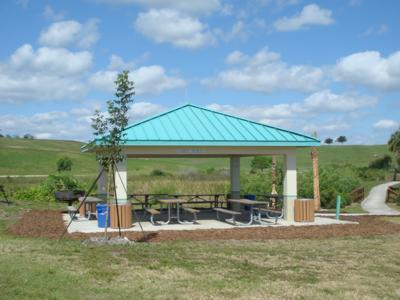
The 210-acre Davie Landfill Superfund site is in Broward County, Florida. A landfill was on-site from 1964 to 1987. It accepted construction debris, tires and municipal wastes. In addition, a basin at the site received grease trap material, septic tank sludge and treated municipal sludge. Waste disposal activities led to the contamination of site soils, sediments and groundwater. EPA added the site to the National Priorities List (NPL) in 1983. With EPA oversight, Broward County contained the contaminated basin sediments, stabilizing the material in a disposal cell and capping the cell with a protective covering. Natural processes that break down contaminants are addressing the contamination in site groundwater. In 2006, EPA took the site off the NPL. In 2011, Broward County reported that groundwater had met drinking water standards for two successive sampling events. Monitoring is ongoing. The site’s remedy allows for a variety of recreational uses. The site is now part of the 272-acre Vista View Park, which opened in 2003. Park facilities include trails, picnic shelters, playgrounds, basketball courts, an equestrian corral, an airstrip for electric radio-controlled planes and glider pilots, fishing docks, and an area for camping. In 2010 and 2014, EPA Region 4 recognized Broward County’s leadership with its Excellence in Site Reuse award.
Last updated September 2024
As of December 2024, the EPA had data on 2 on-site businesses. These businesses employed 4 people and generated an estimated $67,970 in annual sales revenue. For additional information click here.
For more information:
- Recreational and Ecological Use at Superfund Sites Story Map
- Sites in Reuse: Davie Landfill Superfund Site (PDF)
- Reuse and the Benefit to Community: Davie Landfill Superfund Site (PDF)
- News Release: EPA Recognizes Broward County, Fl., for Transforming Former Landfill into a Park
- Region 4 Excellence in Site Reuse Award: Davie Landfill
- Superfund Site Profile Page
ESCAMBIA WOOD - PENSACOLA
The Escambia Wood – Pensacola Superfund site is in Pensacola, Florida. The site includes the 31-acre former facility and about 70 acres of former residential areas nearby. From 1942 to 1982, the Escambia Wood Treating Company ran a wood-preserving plant on-site. Facility operations and waste management practices contaminated soil and groundwater. In 1991, Escambia Wood Treating Company filed for bankruptcy and abandoned the facility. EPA added the site to the National Priorities List (NPL) in 1994. EPA led several cleanup actions at the site. Activities included permanently relocating residents affected by the site and restricting land and groundwater use on-site. Cleanup also included digging up and capping contaminated soil and treating groundwater. Land use on much of the site is restricted to commercial and industrial uses. In 2019, EPA deleted about 50 acres of the site from the NPL. In 2000, Escambia County developed a master redevelopment plan for the site with pilot funding from EPA’s Superfund Redevelopment Program (SRP). The plan identified the area as a prime location for a business park. The final cleanup plan, selected in 2006, included future use considerations. In 2007, EPA, the state, local agencies and community leaders gathered at the site to kick off the soil cleanup. EPA completed major cleanup activities for soil contamination in 2010. In 2013, EPA issued a Ready for Reuse Determination summarizing the remedy’s compatibility with commercial and industrial uses. EPA transferred 70 acres acquired during the relocation to Escambia County in 2018 for the development of Midtown Commerce Park. In 2020, Escambia County used the site to stage and process hurricane debris. In December 2021, the site was among those selected by EPA to receive cleanup funding under the Bipartisan Infrastructure Law (BIL). In 2021, EPA decided to use Bipartisan Infrastructure Law (BIL) funding to complete the groundwater cleanup. The cleanup began in 2024. Escambia County is currently leading the redevelopment of the property.
Last updated September 2024
As of December 2024, the EPA did not have economic data related to on-site businesses, or economic data were not applicable due to site use. For additional information click here.
For more information:
FLORIDA PETROLEUM REPROCESSORS
The Florida Petroleum Reprocessors Superfund site is in Davie, Florida. It consists of the 1-acre facility property and a groundwater plume that covered about 870 acres. From 1979 to 1992, several companies ran the facility. Some of them recycled used motor oil and fuel. In 1996, EPA and the Florida Department of Environmental Protection identified contamination at a nearby municipal well field. The agencies traced the contamination back to the facility. In response, EPA added the site to the National Priorities List (NPL) in 1998. In 2001, cleanup removed contaminated source materials. In 2003, EPA approved a change to the groundwater cleanup approach. From 2003 to 2014, the group of potentially responsible parties enhanced the natural processes that break down contaminants in the groundwater plume. Monitored natural attenuation of the groundwater is ongoing until all contaminants meet the required cleanup levels. A vehicle parking and storage facility is active on the southern part of the site. A highway billboard is also on-site.
Last updated September 2024
As of December 2024, the EPA did not have economic data related to on-site businesses, or economic data were not applicable due to site use. For additional information click here.
For more information:
FLORIDA STEEL CORP.
The 152-acre Florida Steel Corp. Superfund site is northwest of Indiantown, Florida. From 1970 to 1982, site operations included recycling of cars and scrap metal to produce steel reinforcement bars for concrete. EPA found contaminated emissions control dust and soil on-site. EPA added the site to the National Priorities List (NPL) in 1983. Gerdau Ameristeel, the potentially responsible party, completed cleanup activities in 1999. Cleanup included removing contaminated soil and capping emissions control dust on-site. It also included groundwater treatment and wetland sediment removal. Remedy construction is complete. Groundwater treatment is ongoing. The Floridian Natural Gas Storage Company purchased the property, excluding the 6-acre waste containment area, in 2016. The site property is ready for reuse and available for sale. There is a Florida Power & Light electrical substation on the site.
Last updated September 2024
As of December 2024, the EPA did not have economic data related to on-site businesses, or economic data were not applicable due to site use. For additional information click here.
For more information:
- Superfund Site Profile Page
- Site Redevelopment Profile: Florida Steel Corporation Superfund Site (PDF)
FORMER SPELLMAN ENGINEERING
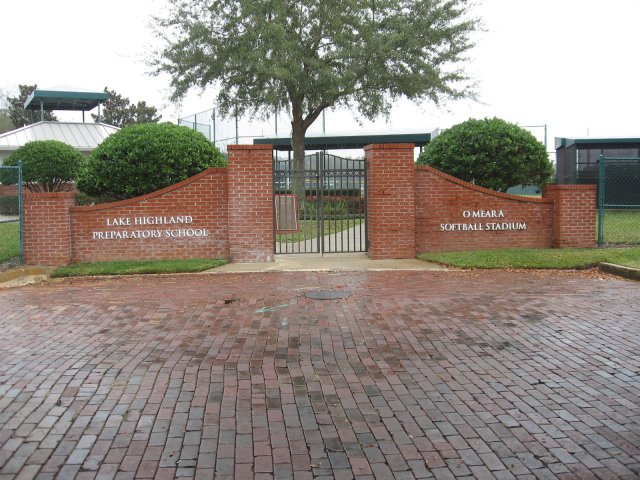
The Former Spellman Engineering site is near downtown Orlando, Florida. A parts-cleaning facility was on-site from 1963 to 1969. In 1992, EPA found a groundwater contaminant plume extending beyond the property boundaries. The contamination was traced back to parts-cleaning operations at the site. In 2008, the city of Orlando (the City) signed the first contiguous property owner agreement (CPO) in the country to conduct the cleanup. After the sale of the property to Lake Highland Preparatory School (LHPS), the City used the proceeds to help fund the cleanup. This effort prevented the site’s listing on the National Priorities List (NPL). Cleanup began in early 2011. It included soil and groundwater treatment. Contamination levels have been reduced by 90% since the construction of the remedy. LHPS also worked with the City, state and EPA to finalize agreements that addressed potential liability concerns. These agreements facilitated the area’s reuse. LHPS built new school facilities. The school’s Lake Highland Athletic Complex includes three sports fields, six tennis courts and parking. The Dinky Line segment of the Orlando Urban Trail, a paved recreation trail, extends through the area. Municipal parking lots are on part of the site.
Last updated September 2024
As of December 2024, the EPA did not have economic data related to on-site businesses, or economic data were not applicable due to site use. For additional information click here.
For more information:
- Ready for Reuse: Downtown Orlando Commercial Property (PDF)
- Site Redevelopment Profile for the Former Spellman Engineering Site (PDF)
- Engaging Early in the Superfund Process, Enabling Cleanup and Reuse: The Former Spellman Engineering Site in Orlando, Florida (PDF)
- Region 4 Excellence in Site Reuse Award: Former Spellman Engineering
- Superfund Site Profile Page
HARRIS CORP. (PALM BAY PLANT)
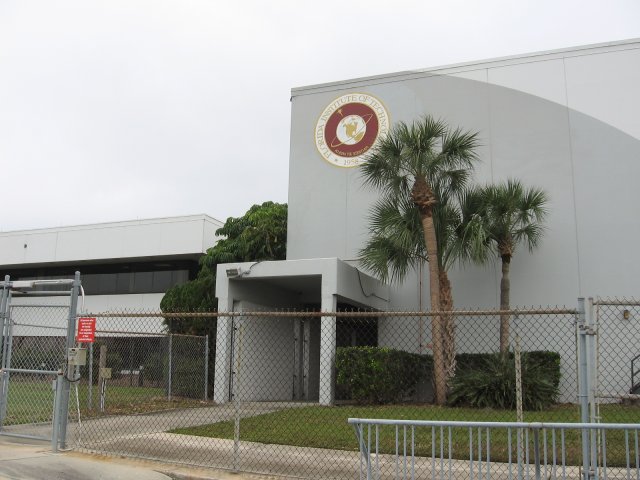
The 310-acre Harris Corp. (Palm Bay Plant) Superfund site is in Palm Bay, Florida. An electronics firm was on-site from the 1950s until Harris Corporation bought it in 1967. Intersil Corporation (Intersil) bought the operations from Harris Corporation. In the early 1980s, EPA found groundwater contamination under the facility and in a nearby well field. EPA added the site to the National Priorities List (NPL) in 1987. The site’s potentially responsible party removed and treated contaminated groundwater until 2002. Groundwater monitoring is ongoing. Intersil donated a state-of-the-art fabrication facility and part of the site property to the University of Central Florida as a research center. After the University decided against using the buildings, Intersil worked with EPA and the Florida Institute of Technology (FIT) to finalize FIT’s purchase of the facility and land. FIT now uses the area as an extended campus for students. A technology center, a convenience store, and a gas station also opened on-site. The electronic plant still operates on-site under another company. Parts of its property are leased to other companies.
Last updated September 2024
As of December 2024, the EPA had data on 13 on-site businesses. These businesses employed 4,380 people and generated an estimated $2,027,553,230 in annual sales revenue. For additional information click here.
For more information:
- Sites in Continued Use, Palm Bay Industrial Property (PDF)
- Harris Corp. (Palm Bay Plant) Ready for Reuse Determination (2009) (PDF)
- Superfund Site Profile Page
HELENA CHEMICAL CO. (TAMPA PLANT)
The 8-acre Helena Chemical Co. (Tampa Plant) Superfund site is in Tampa, Florida. Originally owned by the Flag Sulfur Company, the facility on-site made chemical agricultural products starting in 1929. Helena Chemical Company purchased the facility in 1967 and continued operations. EPA discovered contamination at the site in 1980 and investigated it from 1988 to 1990. Studies found contamination in soil and groundwater. EPA added the site to the National Priorities List (NPL) in 1992. Cleanup involved removing chemical storage tanks as well as treating soils and groundwater. Cleanup began in 2000. It is ongoing. The Helena Chemical Company remains on-site. It uses the facility for packaging and distributing fertilizers, herbicides, pesticides and seed.
Last updated September 2024
As of December 2024, the EPA had data on one on-site business. This business employed 18 people and generated an estimated $32,066,000 in annual sales revenue. For additional information click here.
For more information:
HOLLINGSWORTH SOLDERLESS TERMINAL
The 3.5-acre Hollingsworth Solderless Terminal Superfund site is in Fort Lauderdale, Florida. From 1968 to 1982, Hollingsworth Solderless Terminal Company conducted electrical manufacturing activities on-site. It disposed of wastewater in fields. In 1980, the Broward County Environmental Quality Control Board found that site activities had contaminated groundwater. EPA added the site to the National Priorities List (NPL) in 1983. Cleanup activities abandoned old drain fields, treated soil and groundwater, removed and properly disposed of contaminated soil, and put land use restrictions in place. EPA later updated the remedy and began using bioremediation to address remaining contamination. Today, groundwater contaminant levels are low. Groundwater monitoring is ongoing. EPA’s cleanup design enabled on-site businesses to remain open during cleanup. Many small businesses are on-site. They include a law firm, a siloxane and silicone technology company, a custom woodworking company, and a moving company for the elderly. Other businesses include a commercial and residential construction company, a boat maintenance company and an aerospace company. A church is also on-site.
Last updated September 2024
As of December 2024, the EPA had data on 7 on-site businesses. These businesses employed 52 people and generated an estimated $28,015,373 in annual sales revenue. For additional information click here.
For more information:
- Reuse Fact Sheet: Hollingsworth Solderless Terminal Superfund Site (PDF)
- Superfund Site Profile Page
JACKSONVILLE ASH SITE
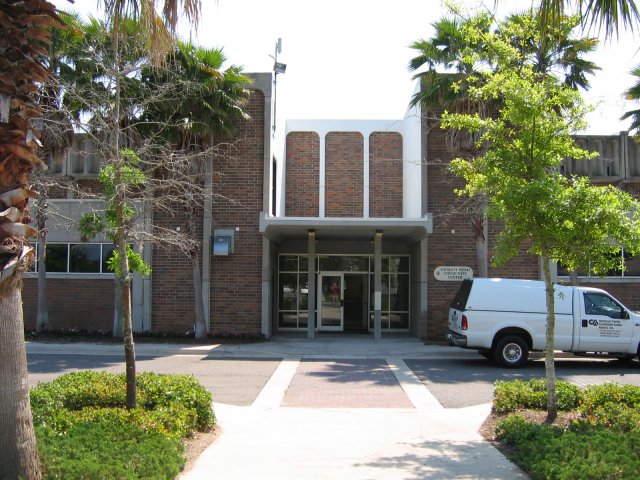
The Jacksonville Ash Site Superfund site is in Jacksonville, Florida. It includes three areas where the city of Jacksonville’s municipal incinerators generated and deposited ash. These areas are the Forest Street Incinerator, the 5th & Cleveland Incinerator and Lonnie C. Miller, Sr. Park. The Forest Street Incinerator covers about 370 acres. The 5th & Cleveland Incinerator covers about 520 acres. Lonnie C. Miller, Sr. Park covers about 250 acres. The Forest Street and 5th & Cleveland Incinerators were the city’s municipal solid waste incinerators from the 1910s to the 1960s. Facility operators buried combustion ash, clinker and ash residues on the incinerator properties as well as on the land later turned into Lonnie C. Miller, Sr. Park. EPA investigations found high levels of lead in soil and groundwater, the result of the discarded incinerator ash. EPA did not add the site to the National Priorities List (NPL). However, EPA considers it to be an NPL-caliber site. EPA is addressing site contamination through the Superfund Alternative Approach. Cleanup activities included digging up contaminated soil, placing clean soil in the excavated area and putting institutional controls in place to prevent exposure to residual contamination. Continued uses at the site include housing residential, ecological, commercial, industrial, recreational and public service areas. Facilities at Lonnie C. Miller, Sr. Park include playgrounds, picnic pavilions, restrooms, a sand volleyball court, walking paths and parking areas. The 5th Street and Cleveland Incinerator area is home to the Emmet C. Reed Community Center, which includes a pool, a basketball court, a playground, the MaliVai Washington Tennis Center and parking. The Forest Street Incinerator area includes a charter school, a park building, a ballfield, parking, playground areas and an animal care facility. With creeks in all three areas, recreation facilities include fishing areas, trails and launch points for canoes and kayaks. In 2010, EPA’s Superfund Job Training Initiative program provided environmental remediation training and career support for 26 trainees in the Jacksonville area. EPA Region 4 recognized the community’s leadership with its Excellence in Site Reuse award in 2015.
Last updated September 2024
As of December 2024, the EPA had data on 171 on-site businesses. These businesses employed 2,009 people and generated an estimated $217,862,953 in annual sales revenue. For additional information click here.
For more information:
- Sites in Reuse: Jacksonville Ash and Brown's Dump Superfund Alternative Sites (PDF)
- Press Release: Excellence in Site Reuse Award
- Region 4 Excellence in Site Reuse Award: Jacksonville Ash Site
- Superfund Site Profile Page
JJ SEIFERT MACHINE
The 0.75-acre JJ Seifert Machine Superfund site is in Ruskin, Florida. From 1962 to 2011, JJ Seifert Machine Company made electronic components on-site. Facility operations resulted in soil and groundwater contamination. In 2009, after EPA and the Florida Department of Environmental Protection (FDEP) investigated site conditions, FDEP put filters on private wells where contaminants exceeded drinking water standards. EPA added the site to the National Priorities List (NPL) in 2010. In 2014 and 2015, EPA dug up 615 tons of contaminated soil and took it off-site for disposal. EPA also put in monitoring wells and injection wells for groundwater cleanup. Injections consisted of using living organisms to break down contaminants, focusing on areas beneath and immediately downgradient of the two main source areas. A second round of injections took place in 2017. EPA did another follow-up injection in July 2020. Groundwater cleanup is ongoing. Institutional controls are in place. They include restrictions on groundwater use, well drilling and land use. They also require the maintenance of engineering controls to prevent potential exposure to underlying contamination. Today, several small commercial businesses are on-site. They include a mower repair shop and business storage facilities.
Last updated September 2024
As of December 2024, the EPA had data on 3 on-site businesses. These businesses generated an estimated $641,000 in annual sales revenue. For additional information click here.
For more information:
KASSAUF-KIMERLING BATTERY DISPOSAL
The 5-acre Kassauf-Kimerling Battery Disposal Superfund site is in Hillsborough County, Florida. Before disposal activities began, a peat pit was on-site. In 1978, a disposal and industrial recycling company put rubber and lead-acid battery cases in the peat pits. The company covered the pits with sand. Site owners built a canal through the pits in the late 1970s. Its construction contaminated soil, groundwater, sediment and the nearby marsh. Investigations in 1981 found the contamination. EPA added the site to the National Priorities List (NPL) in 1983. Cleanup included the removal and solidification of landfill waste and contaminated sediment. The area was capped with compacted soil and grass. The site’s 4-acre contaminated eastern marshes remain flooded to prevent the spread of contamination. The PRPs restored the adjacent Mobbly Bay wetlands. EPA took the site off the NPL in 2000. The site is in reuse to park trucks.
Last updated September 2024
As of December 2024, the EPA did not have economic data related to on-site businesses, or economic data were not applicable due to site use. For additional information click here.
For more information:
LANDIA CHEMICAL COMPANY

The 13-acre Landia Chemical Company Superfund site is in Lakeland, Florida. It spans two property parcels – the former Landia Chemical Company (LCC) property and the former Florida Favorite Fertilizer (FFF) Company. FFF began fertilizer blending operations around 1935. From 1945 to 1987, three companies conducted industrial pesticide operations on the former LCC property. Over time, facility waste management and disposal activities released contaminants into the environment. EPA added the site to the National Priorities List (NPL) in 2000. EPA, the Florida Department of Environmental Protection and the site’s potentially responsible parties (PRPs) have investigated site conditions. Cleanup included removal and disposal of contaminated soil and land and groundwater use restrictions. Groundwater monitoring is ongoing. PRPs replanted vegetation on-site, including over 30 varieties of plants and trees. These areas are in ecological reuse. They provide habitat for native wildlife, migratory birds and pollinators. The trees also help clean up groundwater through uptake and phytoremediation. Sylvite Southeast, a wholesale fertilizer company, owns the FFF facility. It continues to run a fertilizer-blending facility on-site. In 2013, EPA Region 4 recognized the site’s PRPs with its Excellence in Site Reuse award, highlighting their ecological revitalization efforts. In 2015, the PRPs planted more flowering trees, bushes and annuals to enhance the pollinator habitat. Since then, the plants have become well established. Bees, butterflies and other pollinators visit the site.
Last updated September 2024
As of December 2024, the EPA had data on one on-site business. This business employed 16 people and generated an estimated $10,140,000 in annual sales revenue. For additional information click here.
For more information:
- Site Redevelopment Profile for the Landia Chemical Company Superfund Site (PDF)
- Sites in Reuse: Lakeland Industrial Property (PDF)
- Supporting the Health of Pollinators: Ecological Reuse and the Landia Chemical Company Superfund Site (PDF)
- Region 4 Excellence in Site Reuse Award: Landia Chemical Company
- Superfund Site Profile Page
MADISON COUNTY SANITARY LANDFILL

The 90-acre Madison County Sanitary Landfill Superfund site is in Madison, Florida. From 1970 to 1980, the landfill accepted waste, including industrial chemical cleaning products, from the ITT Corporation. Investigations in the mid-1980s found contaminated soil and groundwater on-site. The Florida Department of Environmental Protection (FDEP) immediately put in water purification systems for residents living near the landfill. EPA added the site to the National Priorities List (NPL) in 1988 and selected a remedy in 1992. The cleanup included groundwater treatment, stormwater management, landfill gas collection and landfill capping. Land-use restrictions and local ordinances are in place. The groundwater pump-and-treat system was shut down in December 2010 by the potentially responsible parties after detecting 1,4-dioxane, a synthetic industrial chemical, in the air stripper effluent above the Florida groundwater cleanup target level. The detection of 1,4-dioxane prompted an evaluation of cleanup alternatives that would address the contaminants of concern (COCs), multiple chlorinated volatile organic compounds (CVOCs) and 1,4-dioxane. A modified amendment in 2022 introduced a phased remedy for groundwater treatment which included enhanced reductive dichlorination (ERD). Supplemental amendments included the injection of chemical oxidants into hotspots to destroy organic contaminants in soil and groundwater. EPA also recognized 1,4-dioxane as a COC in groundwater and specified a cleanup level. Operation and maintenance activities are ongoing. Madison County municipal facilities on-site include a recycling center, transportation department offices, storage and maintenance facilities, an aircraft hangar and a landing strip.
Last updated September 2024
As of December 2024, the EPA had data on one on-site business. This business employed 24 people. For additional information click here.
For more information:
MIAMI DRUM SERVICES
The 1.2-acre Miami Drum Services Superfund site is in Miami, Florida. From 1966 to 1981, Miami Drum Services cleaned and recycled drums on-site. Drum cleaning and disposal practices contaminated soil and groundwater in the Biscayne Aquifer. The Miami-Dade County Transit Authority purchased the site property in 1982. EPA added it to the National Priorities List (NPL) in 1983. The county worked with EPA to remove 15,000 tons of contaminated soil and treat over 650,000 gallons of contaminated groundwater. The successful cleanup enabled Miami-Dade County to finish construction of the William Lehman Operations and Maintenance Center, the county’s 82-acre train repair facility. Today, the facility ensures the safety, quality and timeliness of Dade County’s commuter trains, which serve 50,000 people each day.
Last updated September 2024
As of December 2024, the EPA had data on one on-site business. The EPA did not have further economic details related to this business. For additional information click here.
For more information:
MUNISPORT LANDFILL
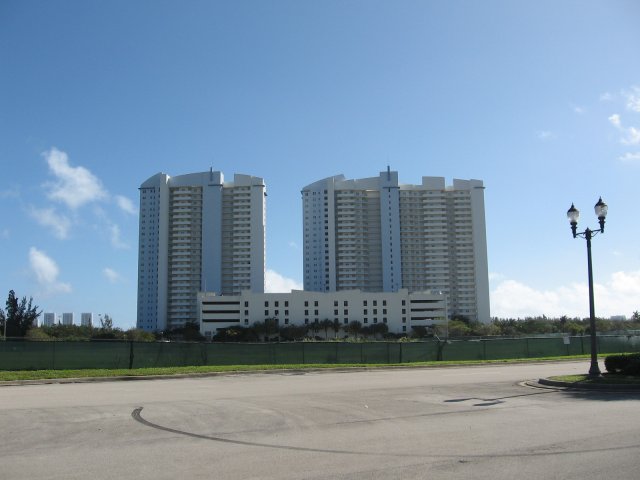
The 170-acre Munisport Landfill Superfund site is in North Miami, Florida. A wetland mangrove preserve connected to Biscayne Bay borders the site. The former landfill is part of a larger parcel of land originally planned for use as part of a trade and cultural center. The center’s developers received solid waste in the 1970s for use as fill material during construction. The developers put 6 million cubic yards of solid waste in an unlined landfill. These disposal practices contaminated area groundwater and surface water. EPA added the site to the National Priorities List (NPL) in 1983. Investigations in the late 1980s found the landfill no longer threatened human health. However, more cleanup was necessary in the mangrove wetlands. Workers put in a barrier to collect and treat groundwater and to prevent contaminants from spreading. More tidal wetland restoration activities followed. Restoration of the tidal wetland area finished in 1995. Construction of access roads and recovery wells for the hydraulic barrier finished in 1996. After extensive study of water quality and toxicity conditions in the mangrove preserve, EPA concluded that increased tidal circulation had eliminated the movement of contamination from the site into the preserve. EPA took the site off the NPL in 1999. In 2004, Miami-Dade County provided funding to the city of North Miami to close the landfill and clean up underlying groundwater contamination. In 2002, developers started work on a master-planned community known as Biscayne Landing. Today, site uses include two 25-story towers of luxury condominiums, retail areas and an award-winning 7-acre lagoon used for recreation. Construction efforts for the project, now known as Solē Mia Miami, are ongoing.
Last updated September 2024
As of December 2024, the EPA had data on 8 on-site businesses. These businesses employed 150 people and generated an estimated $34,019,020 in annual sales revenue. For additional information click here.
For more information:
NOCATEE HULL CREOSOTE
The 75-acre Nocatee Hull Creosote site is in Hull, Florida. From 1913 to 1952, a creosote treatment plant was on-site. It treated railroad ties using high-temperature liquid creosote. Wastes from the plant contaminated soil, groundwater and sediment. In 1986, the Florida Department of Environmental Regulation began investigating after sampling found contamination in private drinking water wells nearby. The site was not added to the National Priorities List (NPL). It is an NPL-caliber site and is managed under the Superfund Alternative Approach (SAA). The potentially responsible party (PRP) finished the cleanup in December 2014. It included excavation and containment of contaminated soils, groundwater treatment, installation of potable water lines for homes affected by groundwater contamination, fencing to prevent unauthorized site access and wetland restoration. The groundwater treatment system is still operating on-site. The PRP also planted native grasslands to provide habitat for pollinators, planted native wetland plant species to prevent erosion and create wildlife habitat, and created an on-site irrigation source for the habitat. Due to the importance of the habitat to the monarch butterfly, Monarch Watch certified the site as a Monarch Waystation. In 2016, the site received Wildlife Habitat Council’s gold status certification and its Wetlands & Water Bodies Project Award.
Last updated September 2024
As of December 2024, the EPA did not have economic data related to on-site businesses, or economic data were not applicable due to site use. For additional information click here.
For more information:
NORMANDY PARK APARTMENTS
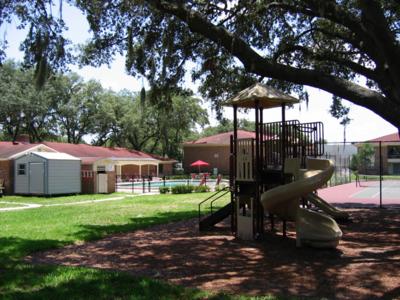
The 9-acre Normandy Park Apartments site is in Temple Terrace, Florida. From 1953 to 1963, Gulf Coast Recycling ran a battery recycling and secondary lead smelting facility on-site. Its operations released sulfuric acid and lead into the environment. The company built a 144-unit apartment complex on the property in 1970. EPA sampling in the early 1990s found widespread contamination. EPA proposed adding the site to the National Priorities List (NPL) in 1995 but did not finalize the listing. With EPA oversight, the potentially responsible party (PRP) continues to clean up the area. The PRP completed soil removal and treatment in 2018. Groundwater monitoring is ongoing. Land use controls limit the use of site soil and groundwater. With EPA and Florida Department of Environmental Protection oversight, the PRP conducts regular operation and maintenance activities. The apartment complex, now called The Park at Monument Terrace, remains on-site. It includes a playground, a swimming pool, an apartment clubhouse and a laundry facility. A 1.2-acre field on the southern part of the site is ready for reuse.
Last updated September 2024
As of December 2024, the EPA had data on one on-site business. This business employed 5 people and generated an estimated $66,310 in annual sales revenue. For additional information click here.
For more information:
NORTHWEST 58TH STREET LANDFILL
The 660-acre Northwest 58th Street Landfill Superfund site is in Hialeah, Florida. From 1952 to 1982, Miami-Dade County ran a municipal landfill at the site. It accepted municipal and industrial wastes. Improper storage and burning of waste contaminated groundwater. In 1975, the U.S. Geological Survey found contaminated groundwater downgradient from the landfill. EPA added the site to the National Priorities List (NPL) in 1983. With oversight from EPA and the Florida Department of Environmental Protection, the county led investigation and cleanup activities. Cleanup included the connection of private wells to the public water system, closure of the landfill, and restrictions on land and groundwater use. Ongoing activities include stormwater management, passive methane and leachate control, and groundwater and methane gas monitoring. After cleanup, EPA took the site off the NPL in 1996. Although the site’s landfill area is fenced and closed to the public, the county allows school groups, birdwatchers and other visitors to view the on-site wetland area and associated wildlife. Visitors walk on a trail along the southern shore of the stormwater management system and restored wetland area. The site is also a staging area for the management of hurricane debris. The southern part of the site is in use for a variety of municipal purposes. Miami-Dade County’s Mosquito Control Division, Solid Waste Management, Transit and Public Works, Internal Services, Fire and Public Safety Training Facilities and South Florida Water Management District offices are on-site.
Last updated September 2024
As of December 2024, the EPA had data on 7 on-site businesses. These businesses employed 233 people and generated an estimated $10,959,517 in annual sales revenue. For additional information click here.
For more information:
ORLANDO GASIFICATION PLANT
The Orlando Gasification Plant Superfund site is near downtown Orlando, Florida. It includes six properties on the north and south sides of West Robinson Street. From 1887 to 1960, the facility heated coal to produce gas for cooking, lighting, heating and industrial purposes. Poor waste handling practices led to contamination of soil and groundwater. EPA is addressing the site through the Superfund Alternative Approach. The site’s potentially responsible parties (PRPs) began remedial investigation activities in 2004. Cleanup activities include removing contaminated soil and former gas plant structures for off-site disposal and backfilling areas with clean material. They also include building a cap over the source area, monitoring groundwater and building a containment system, as well as long-term monitoring and institutional controls to restrict land and groundwater use. A soil vapor extraction system remediates shallow groundwater. Site properties are fenced and covered in pavement. Samples from monitoring wells show that contamination is not spreading. PRPs continue to work on cleaning up deep groundwater contamination. Commercial businesses and a natural gas company are active on-site.
Last updated September 2024
As of December 2024, the EPA did not have economic data related to on-site businesses, or economic data were not applicable due to site use. For additional information click here.
For more information:
PARRAMORE SURPLUS
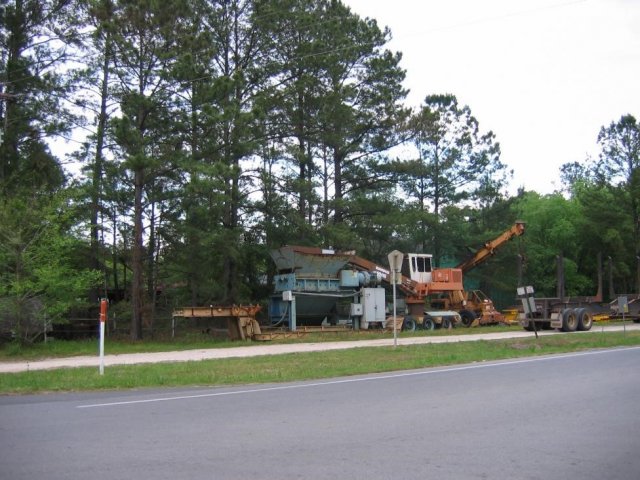
The 25-acre Parramore Surplus Superfund site is in Mount Pleasant, Florida. In the early 1970s, Parramore Surplus began buying products from naval and air force bases. These products included paint residues, waste oil, alcohols and degreasers. In 1982, the Florida Department of Environmental Regulation inspected the site. It found hundreds of drums, some of which had leaked, killing vegetation. EPA added the site to the National Priorities List (NPL) in 1983. The potentially responsible party financed the cleanup. Activities included removing drums and contaminated soil as well as monitoring groundwater. EPA took the site off the NPL in 1989. Continued on-site uses include a storage and resale company for surplus U.S. Navy and Air Force equipment.
Last updated September 2024
As of December 2024, the EPA did not have economic data related to on-site businesses, or economic data were not applicable due to site use. For additional information click here.
For more information:
PEPPER STEEL & ALLOYS, INC.
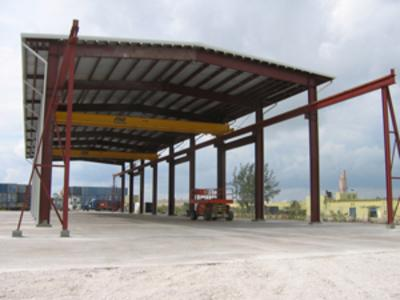
The 25-acre Pepper Steel & Alloys, Inc. Superfund site is in Medley, Florida. From the mid-1960s to the mid-1980s, several industrial businesses, including manufacturers, equipment repair shops and a recycler, operated at the site. The firms disposed of trash and waste products on-site, including oils containing hazardous chemicals, rusted machinery and vehicles, tanks and batteries. The last business closed by the mid-1980s, and the vacant lot was used for illegal dumping. Improper disposal practices contaminated soil and groundwater. EPA added the site to the National Priorities List (NPL) in 1984. With oversight from EPA and the Florida Department of Environmental Protection, the site’s potentially responsible parties led investigations and cleanup. Cleanup included excavation and on-site stabilization and solidification of contaminated soil forming an 11-acre area of stabilized soil. It also included removal of excess oil and groundwater monitoring. Groundwater monitoring is ongoing. Land use controls prohibit the use of the stabilized soil area. Since cleanup, several commercial and industrial businesses have opened at the site. They include a commercial truck storage company, a heavy equipment parts seller and a boat manufacturer.
Last updated September 2024
As of December 2024, the EPA had data on 4 on-site businesses. These businesses employed 303 people and generated an estimated $17,319,030 in annual sales revenue. For additional information click here.
For more information:
- From Abandoned Land to New Life as a Commercial and Light Industrial Hub: The Pepper Steel & Alloys, Inc. Site in Medley, Florida (PDF)
- Site Redevelopment Profile: Pepper Steel & Alloys, Inc. Superfund Site (PDF)
- Redevelopment of the Pepper Steel & Alloys Superfund Site (PDF)
- Reuse Fact Sheet (PDF)
- Superfund Site Profile Page
PETROLEUM PRODUCTS CORP.
The 8-acre Petroleum Products Corp. Superfund site is in Pembroke Park, Florida. Petroleum Products Corporation ran a used oil refining facility on-site from 1957 to 1971. Improper waste handling practices and oil spills led to soil and groundwater contamination. EPA added the site to the National Priorities List (NPL) in 1987. Cleanup activities include extraction and removal of contaminated soil, stabilization of soil in place, and groundwater treatment and monitoring. EPA investigations and cleanup actions are addressing remaining soil and groundwater contamination. The site is in a commercial and industrial area. Site uses include a warehouse complex, storage units, commercial and light industrial businesses, a shooting range, a restaurant and parking.
Last updated September 2024
As of December 2024, the EPA had data on 42 on-site businesses. These businesses employed 210 people and generated an estimated $67,956,299 in annual sales revenue. For additional information click here.
For more information:
- Superfund Site Profile Page
- Sites in Continued Use: Pembroke Commercial/Light Industrial Property (PDF)
PIPER AIRCRAFT CORP./VERO BEACH WATER & SEWER DEPARTMENT
The 80-acre Piper Aircraft Corp./Vero Beach Water & Sewer Department Superfund site is in Vero Beach in Indian River County, Florida. A facility has made small commuter and business airplanes on-site since 1975. Soil and groundwater contamination resulted from a leaking underground storage tank that stored chemicals used in its manufacturing process. To address the contamination, Piper Aircraft put in a groundwater pump-and-treat system in 1981. The company removed the tank and contaminated soil in 1989. EPA added the site to the National Priorities List (NPL) in 1990. With EPA and Florida Department of Environmental Protection oversight, Piper Aircraft, the site’s potentially responsible party, leads cleanup activities. A second groundwater extraction and treatment system began running in 1998. When contaminant levels dropped below state cleanup levels in 2017, Piper Aircraft shut the system down. Groundwater monitoring is ongoing. Low-level residual groundwater contamination is in a Florida Delineation Zone that prevents well installation. Piper Aircraft continues to operate its facility on-site. Several airport support businesses are also on-site. In addition to cleanup, Piper Aircraft has improved its overall environmental footprint, converting diesel-fire boilers to natural gas-fire heaters and using technology to reduce manufacturing waste. In 2019, EPA Region 4 recognized the company with its Excellence in Site Reuse award, documenting its commitment to site cleanup and restoration.
Last updated September 2024
As of December 2024, the EPA had data on 3 on-site businesses. These businesses employed 826 people and generated an estimated $228,858,945 in annual sales revenue. For additional information click here.
For more information:
- Site Redevelopment Profile: Piper Aircraft Corp./Vero Beach Water & Sewer Department (PDF)
- Sites in Continued Use: Vero Beach Industrial Property (PDF)
- Region 4 Excellence in Site Reuse Award: Piper Aircraft Corp./Vero Beach Water & Sewer Department
- Superfund Site Profile Page
RALEIGH STREET DUMP

The 5-acre Raleigh Street Dump Superfund site is in Tampa, Florida. Chloride Metals, Inc dumped battery casings, furnace slag, trash and construction debris on-site from 1977 to 1991. Tampa Fiberglass dumped waste oil, resins, sludge and other trash on-site from 1988 to 1990. In 1988, the Hillsborough County Environmental Protection Commission received complaints that Tampa Fiberglass improperly disposed of waste at the site. EPA added the area to the National Priorities List (NPL) in 2009. Cleanup activities included the removal and disposal of contaminated soils, addition of clean soils, planting of grass seed, wetlands restoration, groundwater monitoring and limits on future site uses. Fiberglass recycling production is ongoing on the southern part of the site. Potentially responsible parties (PRPs) expanded wetlands habitat, creating a wildflower and native grass meadow on the upland area. PRPs put in nesting boxes for small birds and created habitat brush piles. PRPs also put in a bat box to provide habitat for native Florida bats and planted two milkweed gardens for Monarch butterflies. At the 2015 Wildlife Habitat Council’s annual conservation conference, a PRP contractor accepted the “Rookie of the Year” award for ecological restoration efforts at the site on behalf of the PRPs. EPA Region 4 also recognized the PRPs with its 2016 Excellence in Site Reuse award for their collaboration with EPA and the Florida Department of Environmental Protection for site restoration efforts.
Last updated September 2024
As of December 2024, the EPA had data on one on-site business. This business employed 3 people and generated an estimated $299,050 in annual sales revenue. For additional information click here.
For more information:
- Site Redevelopment Profile for the Raleigh Street Dump Superfund Site (PDF)
- CSX/ALI to Receive EPA's "Excellence in Site Re-Use" Award
- Region 4 Excellence in Site Reuse Award: Raleigh Street Dump
- Superfund Site Profile Page
REEVES SOUTHEASTERN GALVANIZING CORP.
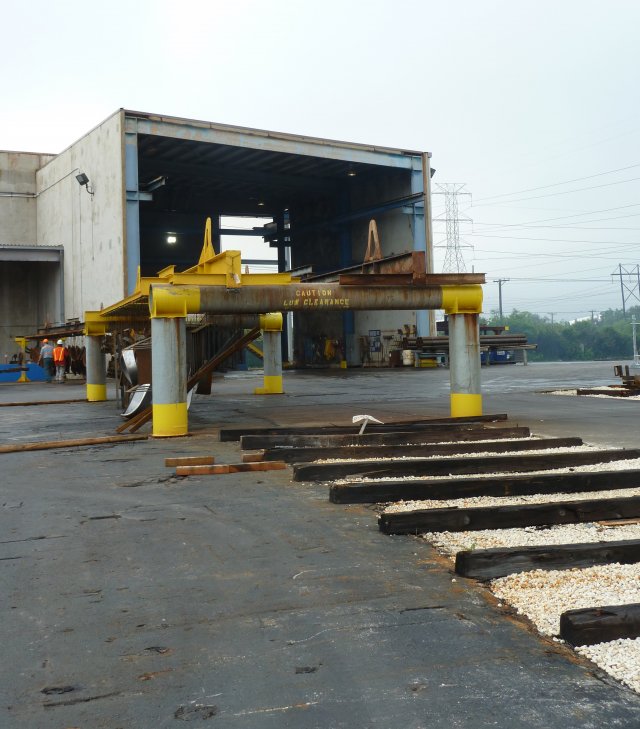
The Reeves Southeastern Galvanizing Corp. Superfund site is in Tampa, Florida. It includes the 17-acre Reeves Southeastern Galvanizing facility and the 11-acre Reeves Southeastern Wire facility. Starting in the 1960s, the Reeves facilities put waste in ponds on-site. This resulted in contamination of soil, sediment and groundwater. EPA added the site to the National Priorities List (NPL) in 1983. Cleanup activities included removal, treatment and disposal of soil and sediment, land use and groundwater restrictions, and a well survey. In 2014, EPA updated the groundwater remedy from monitored natural attenuation to in-place, chemically induced precipitation. Monitoring of groundwater and wetlands is ongoing. EPA put institutional controls in place to restrict use of site groundwater and prevent further exposure to contamination. Most of the site has remained in continued use during cleanup. In 1996, Industrial Galvanizers of America leased a 10-acre part of the property for a galvanizing facility. In 2001, Master-Halco bought Reeves Southeastern Corporation's Southeastern Wire Division through a Prospective Purchaser Agreement (PPA). A PPA encourages the reuse of Superfund site properties by addressing purchaser and lessee liability concerns. The company continues to operate a wire-fencing manufacturing facility on-site. Several automotive, distribution and equipment businesses are also on-site.
Last updated September 2024
As of December 2024, the EPA had data on 6 on-site businesses. These businesses employed 297 people and generated an estimated $275,997,108 in annual sales revenue. For additional information click here.
For more information:
SANFORD DRY CLEANERS
The 0.3-acre Sanford Dry Cleaners Superfund site is in Sanford, Florida. From the 1940s to 2001, a laundry and dry-cleaning facility was on-site. Dry-cleaning operations contaminated soil and groundwater. EPA added the site to the National Priorities List (NPL) in 2010. Cleanup included excavation and disposal of contaminated soil and bioremediation of contaminated groundwater. EPA completed the soil cleanup and began the groundwater cleanup in 2015. Institutional controls restrict groundwater use. Groundwater cleanup and monitoring are ongoing. EPA worked with the city of Sanford and a prospective redeveloper to address concerns related to Superfund liability and pave the way for reuse. The site is part of the city’s Waterfront Downtown Business District. Residential and commercial redevelopment in this area extending along the Lake Monroe waterfront is a community priority. In 2018, the local government auctioned the three site properties for commercial redevelopment. Today, a restaurant and a winery are on-site. The property owner also uses a building to store restaurant equipment and has plans to expand restaurant operations.
Last updated September 2024
As of December 2024, the EPA had data on 2 on-site businesses. These businesses employed 26 people and generated an estimated $207,500 in annual sales revenue. For additional information click here.
For more information:
SAPP BATTERY SALVAGE
The 45-acre Sapp Battery Salvage Superfund site is in Jackson County, Florida. A battery recycling facility was on-site from the early 1970s until 1980. Improper waste disposal at the site contaminated the groundwater, soil and surrounding wetlands. In 1980, the Sapp Battery Company closed and left the facility. EPA added the site to the National Priorities List (NPL) in 1983. The site’s potentially responsible party and EPA led investigation and cleanup activities in cooperation with the Florida Department of Environmental Protection. Cleanup included the removal and treatment of contaminated soil, sediments and groundwater. Groundwater cleanup is ongoing. A new owner bought the site property in 2016. The area is in reuse as pasture. Cows, horses and ponies graze on-site. Restored wetlands and ponds provide 30 acres of wildlife habitat.
Last updated September 2024
As of December 2024, the EPA did not have economic data related to on-site businesses, or economic data were not applicable due to site use. For additional information click here.
For more information:
SCHUYLKILL METALS CORP.
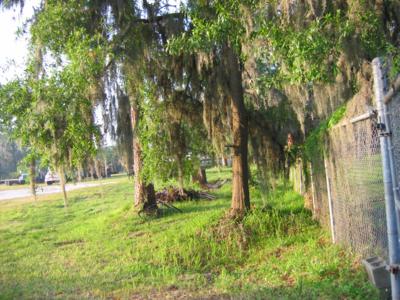
The 17.4-acre Schuylkill Metals Corp. Superfund site is in Plant City, Florida. A battery-recycling facility was on-site from 1972 to 1986. Improper waste management resulted in contamination of soil, sediment, surface water and groundwater. EPA added the site to the National Priorities List (NPL) in 1983. The facility closed in 1986. EPA’s 1990 cleanup plan addressed contaminated soil, groundwater and marshes. Cleanup included excavation, treatment and on-site disposal of contaminated soils and sediments in a monolith, and wetland sequestration and mitigation. It also included groundwater containment and extraction and treatment of contaminated surface and groundwater. The replanted wetland has grown vigorously and attracts a variety of wildlife. Cleanup finished in 1998. After cleanup, EPA took the site off the NPL in 2001. The site remains vacant. It is in use as habitat.
Last updated September 2024
As of December 2024, the EPA did not have economic data related to on-site businesses, or economic data were not applicable due to site use. For additional information click here.
For more information:
SHERWOOD MEDICAL INDUSTRIES
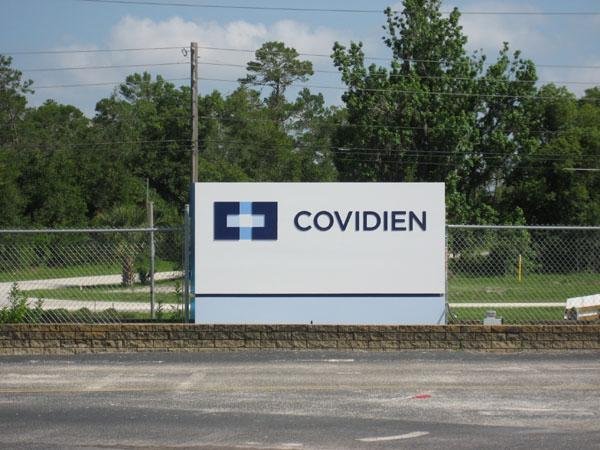
The 43-acre Sherwood Medical Industries Superfund site is in DeLand, Florida. Sherwood Medical Industries made medical supplies on-site beginning in 1959. The company put liquid and sludge wastes into tanks and ponds, contaminating soil and groundwater. EPA added the site to the National Priorities List (NPL) in 1983. Ongoing cleanup activities include collection, treatment and monitoring of groundwater, and surface water and sediment sampling. The site owner also tests residential wells and enforces land use restrictions. Access to Miller Lake, which is partially located on-site, is also restricted. The area remains in continued use. Cardinal Health makes medical supplies on-site. Remedy optimization is underway to speed up cleanup.
Last updated September 2024
As of December 2024, the EPA had data on one on-site business. This business employed 900 people and generated an estimated $1,044,367,000 in annual sales revenue. For additional information click here.
For more information:
SOLITRON DEVICES INC
The 8-acre Solitron Devices Inc Superfund site is in Riviera Beach, Florida. From 1959 to 1992, two companies made electrical components for the defense and space industries on-site. They used heavy metals and organic solvents during facility operations. Industrial wastewater went into the city of Riviera Beach’s sewer system. In 1985, a state study found that solvents from the site had contaminated supply wells in the city’s public well field. It also found groundwater contamination and a small area of soil with metals contamination. The site is not on the National Priorities List (NPL). EPA considers it an NPL-caliber site and is addressing it through the Superfund Alternative Approach. Cleanup included excavation and off-site disposal of contaminated soil as well as groundwater pumping and treatment. The groundwater pump-and-treat system is still in operation. In 1999, EPA entered into a Prospective Purchaser Agreement (PPA) with the National Land Company (NLC) for the northern, 4-acre part of the site property. A PPA encourages the reuse of Superfund site properties by addressing purchaser and lessee liability concerns. NLC bought the area in 2000. NLC renovated it for commercial and light-industrial land uses, including warehousing, light manufacturing and storage. Several commercial and industrial companies are now on-site.
Last updated September 2024
As of December 2024, the EPA had data on 4 on-site businesses. These businesses employed 32 people and generated an estimated $31,362,000 in annual sales revenue. For additional information click here.
For more information:
SOLITRON MICROWAVE

The 20-acre Solitron Microwave Superfund site is in Port Salerno, Florida. From 1963 to 1987, metal plating and microwave manufacturing businesses were on-site. Manufacturers made materials for the military, aerospace and microwave industries. Leaking pipes, drum pads and general operations contaminated soil and groundwater. EPA added the site to the National Priorities List (NPL) in 1998. Cleanup included soil removal, groundwater treatment and extension of the public water supply to affected homes and businesses. Cleanup activities started in 2000. They finished in 2004. Groundwater monitoring is ongoing. EPA provided safety and liability information to local officials and prospective purchasers to promote reuse. Port Salerno Industrial Park (PSIP) purchased the site property in 2003 through a Prospective Purchaser Agreement (PPA). A PPA encourages the reuse of Superfund site properties by addressing purchaser and lessee liability concerns. PSIP coordinated with EPA during the construction of an industrial park for warehouse, office space and commercial facilities. The industrial park consists of seven lots with a paved roadway and 6 acres reserved for wetland areas and a native plant habitat reserve. Commercial and industrial businesses on-site today include an automotive and boat restoration company, a building materials supplier and a printing business. In 2008, EPA Region 4 presented PSIP with its Excellence in Site Reuse award, recognizing its leadership and redevelopment efforts.
Last updated September 2024
As of December 2024, the EPA had data on 6 on-site businesses. These businesses employed 104 people and generated an estimated $17,882,144 in annual sales revenue. For additional information click here.
For more information:
- Reuse and the Benefit to Community: A Beneficial Effects Economic Case Study for the Solitron Microwave Superfund Site (PDF)
- Sites in Reuse: Solitron Microwave Superfund Site (PDF)
- Port Salerno Industrial Park Excellence in Site Reuse Award
- Region 4 Excellence in Site Reuse Award: Solitron Microwave
- Superfund Site Profile Page
SOUTHERN SOLVENTS, INC.
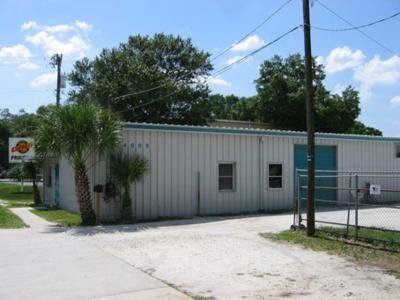
The 1-acre Southern Solvents, Inc. Superfund site is in Tampa, Florida. A dry-cleaning solvents facility was on-site from the late 1970s to 1989. Spills from storage tanks contaminated soil and groundwater. EPA added the site to the National Priorities List (NPL) in 2000. Cleanup included soil and groundwater treatment. Groundwater use restrictions are in place. A commercial painting business opened on-site in 1998. EPA worked with the company to make sure cleanup activities did not affect its operations. They also worked together to address potential liability concerns. In 2002, EPA entered into a Prospective Purchaser Agreement with the painting company. The company then bought the site property. It remains active on-site. In 2023, the site was selected by EPA to receive cleanup funding under the Bipartisan Infrastructure Law (BIL). EPA is working with the property owner to begin a cleanup action at the site.
Last updated September 2024
As of December 2024, the EPA had data on one on-site business. This business employed 16 people and generated an estimated $1,060,000 in annual sales revenue. For additional information click here.
For more information:
SPRAGUE ELECTRIC COMPANY
The 12-acre Sprague Electric Company site is in Seminole County, Florida. The Sprague Electric Company made film capacitors on-site from 1959 to 1992. As a part of the manufacturing process, the capacitors were cleaned using the vapor-degreasing compounds trichloroethene (TCE) and 1,1,1-Trichloroethane (1,1,1-TCA). In 1992, Sprague sold the manufacturing equipment and business operations to Dearborn Electric, who later sold the business to Exxelia, the current owner-operator at the facility. The use of chlorinated solvents was reportedly discontinued in 1992 and replaced with a combination of caustic cleaners and alcohols. EPA did not list the site on the NPL. It is an NPL-caliber site. EPA addresses it through EPA’s Superfund Alternative Approach. The site is divided into two operable units (OUs) for cleanup activities. In 2004, EPA and Great American Financial Resources, Inc. (GAFRI), the site’s potentially responsible party (PRP), entered an administrative order on consent (AOC) to perform site cleanup for both OU-1 and OU-2. With oversight from EPA and the Florida Department of Environmental Protection (FDEP), the PRP now leads investigation and cleanup activities. Cleanup actions include groundwater treatment and monitoring, soil vapor extraction, and placement of filters on private drinking water wells at two nearby properties due to possible site-related contamination in the wells. Investigations are ongoing. The property is currently zoned for mixed commercial and light industrial use.
Last updated September 2024
As of December 2024, the EPA did not have economic data related to on-site businesses, or economic data were not applicable due to site use. For additional information click here.
For more information:
STANDARD AUTO BUMPER CORP.

The 7-acre Standard Auto Bumper Corp. Superfund site is in Hialeah, Florida. Standard Auto Bumper Corporation ran a plating facility on-site from 1959 to 1992. Operators sent wastewater into a ditch behind the facility. They later treated wastewater and put it in a percolation pit. These waste disposal practices led to soil and groundwater contamination. Miami-Dade County found contamination at the site in 1977. EPA added the site to the National Priorities List (NPL) in 1989. In 1992, EPA selected a cleanup plan. It included the removal and disposal of contaminated soil, groundwater monitoring and groundwater use controls. After cleanup, EPA took the site off the NPL in 2007. Today, a roofing business uses the site for parking and equipment storage. A bakery and a furniture company are on an area that is now part of the site after EPA expanded its original boundaries.
Last updated September 2024
As of December 2024, the EPA had data on 2 on-site businesses. The EPA did not have further economic details related to these businesses. For additional information click here.
For more information:
STAUFFER CHEMICAL CO (TAMPA)
The 40-acre Stauffer Chemical Company (Tampa) Superfund site is in Tampa, Florida. From 1951 to 1986, Stauffer Chemical Company used the area for production, packaging and distribution of agricultural chemical products (mostly pesticides). Improper waste disposal practices led to contamination of soil, sediments, surface water and groundwater with pesticides. EPA added the site to the National Priorities List (NPL) in 1996. Before NPL listing, EPA and Stauffer Management Company (SMC), the oversight body for Stauffer Chemical Company, agreed to conduct initial cleanup to contain contaminants. Early cleanup efforts included removal of buried drums, contaminated soil and debris. EPA and SMC conducted further cleanup and long-term maintenance activities that would allow for future reuse of the site. This cleanup included treatment of contaminated groundwater, soil and sediment. SMC secured materials with protective cap. Legal restrictions prohibit the use of groundwater and any activities that could disturb the capped area. Groundwater treatment and monitoring are ongoing. In response to lost wetlands, a conservation easement now protects a 5.6-acre part of the site as an ecological area. A pipeline crosses the site. An additional site parcel is available for redevelopment.
Last updated September 2024
As of December 2024, the EPA did not have economic data related to on-site businesses, or economic data were not applicable due to site use. For additional information click here.
For more information:
TAYLOR ROAD LANDFILL

The 42-acre Taylor Road Landfill Superfund site is in Hillsborough County, Florida. Taylor Road Landfill was one of three landfills owned and operated by Hillsborough County at the site. From 1976 to 1980, it received residential, commercial and industrial wastes. In October 1979, EPA found contamination in monitoring wells. EPA added the site to the National Priorities List (NPL) in 1983. Hillsborough County closed all three landfills under a state landfill closure program. Closure activities included capping waste, putting in a vegetative cover, and collecting gas and leachate. The cleanup plan included addressing groundwater contamination, connecting nearby homes to the public water supply and restricting use of drinking water wells. Current site uses include a county-run recycling center, a community collection center, a household chemical and electronics collection center, a site maintenance facility and an environmental field office. Hillsborough County, along with the Tampa Radio-Control Aircraft Club and the Academy of Model Aeronautics, established a model airplane park on-site. The county also worked with the U.S. Department of Energy from 2003 to 2007, evaluating the use of methane gas from the landfills as a potential renewable energy resource. In 2010, EPA Region 4 presented Hillsborough County with its Excellence in Site Reuse award, recognizing the county’s leadership and innovation in returning the site to productive and beneficial use.
Last updated September 2024
As of December 2024, the EPA had data on one on-site business. The EPA did not have further economic details related to this business. For additional information click here.
For more information:
- Sites in Reuse: Seffner Former Industrial Property (PDF)
- News Release: EPA Recognizes Hillsborough County, Fl., for Taylor Road Landfill Superfund Site Reuse
- Region 4 Excellence in Site Reuse: Taylor Road Landfill
- Superfund Site Profile Page
TOWER CHEMICAL CO.

The 16-acre Tower Chemical Co. Superfund site is about 5 miles east of Clermont, Florida. From 1957 to 1980, Tower Chemical Company had a chemical pesticide manufacturing facility on-site. Its waste disposal practices contaminated soils, groundwater, surface water and sediments with metals, pesticides, volatile organic compounds (VOCs) and semi-VOCs. EPA added the site to the National Priorities List (NPL) in 1983. Cleanup to date has included building demolition and removal, sediment removal, and soil removal, stabilization and solidification. They also included connections to municipal drinking water for many nearby homes, studies for groundwater treatment and monitoring, and restrictions on land and groundwater use. In 2005, new owners purchased a 15-acre parcel at the site under a Bona Fide Prospective Purchaser (BFPP) agreement. A BFPPA encourages BFPPs to conduct additional cleanup work at Superfund site properties by providing EPA oversight and addressing liability concerns. The owners turned the area into a storage facility for recreational vehicles, boats, trailers and other commercial vehicles. The owners cleared much of the rest of the parcel for future expansion. An auto-repair shop remains active in a building on-site. A bike trail runs immediately east of the site, along its eastern boundary. After groundwater treatment studies, EPA updated the remedy in 2019, using in-situ stabilization (ISS) for remaining subsurface contamination. In December 2021, the site was among those selected by EPA to receive cleanup funding under the Bipartisan Infrastructure Law (BIL). With this funding, EPA started using ISS at the site. The owners of the RV storage facility (the BFPPs) moved vehicles to help make the work possible. More demolition and removal of a building foundation also took place to make possible the materials preparation area (batch plant) required for the ISS work. The ISS work has been completed. The site is undergoing restoration to return the treatment area in the center of the site to the previous condition as an RV storage facility. EPA is also working with the RV storage company owners to add a restrictive covenant for groundwater and land use on-site. Once the ISS work finishes, EPA will allow site groundwater to stabilize for three years and then test it to determine if more action is warranted. Groundwater sampling was done during the remedy implementation and will be done again before full demobilization. Off-site monitoring wells were sampled, and access was provided by the various property owners. Annual groundwater sampling is planned as part of the RA to determine the next steps and provide information that will contribute to the final remedy.
Last updated September 2024
As of December 2024, the EPA had data on 2 on-site businesses. These businesses employed 16 people and generated an estimated $646,180 in annual sales revenue. For additional information click here.
For more information:
TRANS CIRCUITS, INC.
The 1-acre Trans Circuits, Inc. Superfund site is in an industrial park in Lake Park, Palm Beach County, Florida. From 1978 to 1985, Trans Circuits had a manufacturing and electroplating facility for components used in electronic circuit boards on-site. Waste disposal practices contaminated soils and groundwater. EPA added the site to the National Priorities List (NPL) in 2000. Cleanup included removal of contaminated soil, treatment of contaminated groundwater, restriction of certain land and groundwater uses, and replacement of a public well. Plans call for another round of bioremediation injections to address remaining groundwater contamination. In 2010, a gas turbine and aerospace parts manufacturing company located nearby expressed interest in expansion opportunities at the site. After extensive coordination with EPA and the state, it purchased the site property in 2011. The company remains active on-site.
Last updated September 2024
As of December 2024, the EPA had data on one on-site business. This business employed 3 people and generated an estimated $14,637,000 in annual sales revenue. For additional information click here.
For more information:
TRI-CITY OIL CONSERVATIONIST, INC
The quarter-acre Tri-City Oil Conservationist, Inc. Superfund site is outside Tampa, Florida. A waste oil storage and distribution center was on-site from 1978 to 1983. Its operations caused spills and leaks from tanks and lines. In 1982, there was a 3,000-gallon spill of waste oil at the site. The Florida Department of Environmental Regulation (FDER) found contamination in soil and sludge samples from the spill area. After the owners refused an FDER request to clean up the spill, EPA took immediate action to clean up contamination under the Superfund program. EPA added the site to the National Priorities List (NPL) in 1984. EPA removed and disposed of contaminated soil and removed storage tanks. EPA then replanted the area to prevent erosion. In 1986, soil and groundwater sampling confirmed the removal of the source of contamination and that drinking water met state and federal standards. After cleanup, EPA took the site off the NPL in 1988. In 1990, Mike’s Garage purchased the site property and reused the original building as an auto repair business. The garage remains active on-site.
Last updated September 2024
As of December 2024, the EPA had data on one on-site business. This business employed 4 people and generated an estimated $441,200 in annual sales revenue. For additional information click here.
For more information:
UNITED METALS, INC.
The 180-acre United Metals, Inc. Superfund site is in Marianna, Florida. It is about 1.5 miles east of the Chipola River. From 1979 to 1991, the United Metals, Inc. facility recycled lead-acid batteries on 24 acres of the site. Facility operators discharged process wastewater into unlined holding ponds. Discharges as well as spills and poor housekeeping in battery processing areas contaminated surface soil, sediment and groundwater. EPA added the site to the National Priorities List (NPL) in 2003. Cleanup included removal and containment of hazardous waste debris from soil and sediment. EPA backfilled soil removal areas with clean topsoil and replanted 500 dogwood trees. EPA also restored wetlands as part of the cleanup. Groundwater monitoring is ongoing. In 2020, EPA’s Superfund Redevelopment Program (SRP) and the Federal Emergency Management Agency (FEMA) funded a regional support project in Marianna and five other cities in the Florida Panhandle. Its goal was to aid recovery after Hurricane Michael with a technical assistance effort called the Recovery and Resiliency Partnership Project. A new owner purchased the property in 2013. A vehicle salvage and scrap metal recycling yard are active on-site.
Last updated September 2024
As of December 2024, the EPA had data on one on-site business. The EPA did not have further economic details related to this business. For additional information click here.
For more information:
VARSOL SPILL
The Varsol Spill Superfund site is in Miami, Florida. It is part of Miami International Airport. The airport is less than a half-mile south of the Lower Miami Springs Municipal Well Field. Starting in 1966, airport industrial operations resulted in spills and leaks of jet fuel and petroleum solvents. In 1970, sampling found leaked solvent in the northeast section of the airport. Investigations confirmed that airport operations contaminated surface water and groundwater. EPA added the site to the National Priorities List (NPL) in 1983. Dade County put in 43 monitoring wells to determine the extent and magnitude of spilled jet fuel. Dade County then put recovery wells in the Concourse E area. Between 1983 and 1984, operations recovered over 102,000 gallons of jet fuel. In 1985, EPA determined there was no need for further remedial actions because groundwater contamination was no longer present. EPA took the site off the NPL in 1988. The area remains in continued use as part of Miami International Airport. A flight academy is also on site.
Last updated September 2024
As of December 2024, the EPA had data on 2 on-site businesses. These businesses employed 240 people and generated an estimated $79,524,560 in annual sales revenue. For additional information click here.
For more information:
WEST FLORIDA NATURAL GAS COMPANY
The 8-acre West Florida Natural Gas Company Superfund site is in Ocala, Florida. A manufactured gas plant was on-site from 1895 to 1953. While in operation, water gas and carbureted water gas were made at the site by carbonization or destructive distillation of bituminous coal and coke. These processes resulted in the release and onsite disposal of chemical byproducts including coal tar. Waste disposal practices resulted in soil and groundwater contamination. People’s Gas System, the potentially responsible party (PRP), removed and disposed of 10,000 tons of contaminated soil in 1990. EPA did not add the site to the National Priorities List (NPL) but considers it an NPL-caliber site. EPA is addressing the site through the Superfund Alternative Approach. It uses the same investigation process, cleanup process and standards used for sites on the NPL. Investigations and cleanup planning are ongoing. Site properties are fenced. A reinforced, 8-inch-thick concrete slab covers most areas of contaminated soil. Samples from the site’s groundwater monitoring wells indicate that contamination is not spreading. Contamination does not affect well fields for the public water supply in the area. Institutional controls in place ensure that the remedy is maintained, the site is undisturbed and future land use remains industrial. A scrap metal recycling facility is on-site.
Last updated September 2024
As of December 2024, the EPA had data on one on-site business. This business employed 10 people and generated an estimated $10,549,000 in annual sales revenue. For additional information click here.
For more information:
WILSON CONCEPTS OF FLORIDA, INC.
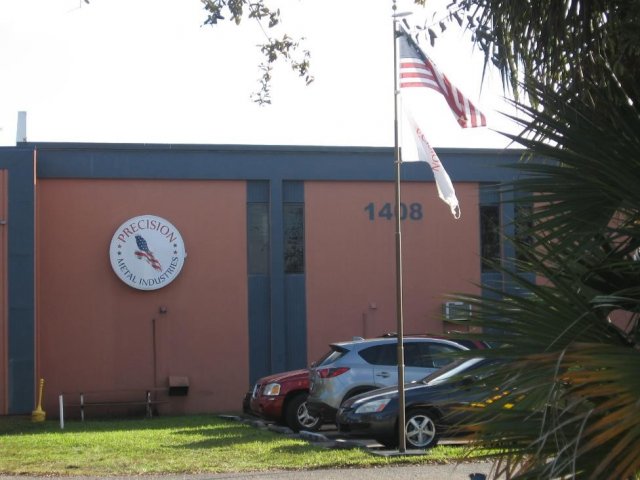
The 2-acre Wilson Concepts of Florida, Inc. Superfund site is in Pompano Beach, Florida. Wilson Concepts ran a precision parts manufacturing facility on-site from 1967 to 1987. Waste handling practices contaminated soil and groundwater. EPA added the site to the National Priorities List (NPL) in 1989. Further investigations found that it did not pose a risk to human health or the environment. EPA took the site off the NPL in 1995. In 2018, EPA took more soil samples to analyze for hexavalent chromium. Results show that contaminants do not threaten human health. A sheet metal manufacturer is active on-site.
Last updated September 2024
As of December 2024, the EPA had data on one on-site business. This business employed 81 people and generated an estimated $23,980,000 in annual sales revenue. For additional information click here.
For more information:
WOODBURY CHEMICAL CO. (PRINCETON PLANT)
The 5-acre Woodbury Chemical Co. (Princeton Plant) Superfund site is in Princeton, Florida. The Woodbury Chemical Company made, distributed, and sold fertilizers and pesticides at the site. After a 1979 chemical spill, the Miami-Dade County Department of Environmental Resources Management found high levels of contamination in drinking water wells on and near the site. EPA sampling also identified contamination in soil and groundwater. EPA added the site to the National Priorities List (NPL) in 1990. The Woodbury Chemical Company removed contaminated soil from the chemical spill area. EPA’s final cleanup plan required groundwater monitoring and no further action for soil. After groundwater monitoring results showed the site did not pose a significant risk to public health, EPA took the site off the NPL in 1995. Woodbury Chemical Company and a farm supply store remained active on-site during cleanup activities but have since closed. No further cleanup activities are anticipated. A residential development company purchased the site property in 2005. A recreational vehicle rental agency and a general contractor are active on-site.
Last updated September 2024
As of December 2024, the EPA had data on one on-site business. This business employed 5 people and generated an estimated $57,840 in annual sales revenue. For additional information click here.
For more information:
- Sites in Continued Use: Princeton Commercial/Light Industrial Property (PDF)
- Superfund Site Profile Page
YELLOW WATER ROAD

The Yellow Water Road Superfund site is in Baldwin, Florida. In the early 1980s, the American Environmental Energy Corporation, the American Electric Corporation and the American Environmental Protection Corporation joined together to start a disposal facility at the site. During facility operations, chemicals spilled onto the ground and contaminated the soil. EPA added the site to the National Priorities List (NPL) in 1986. Cleanup activities included treating contaminated soil, monitoring groundwater, and restricting well water use and certain land uses in the area. After cleanup, EPA took the site off the NPL in 1999. In 2010, institutional controls were placed on the site to prohibit groundwater use and remedy disturbance, and to protect the public and environment from further exposure to contamination. Inspections and groundwater monitoring are ongoing. EPA’s cleanup plan and cooperation among site stakeholders enabled the continued use of part of the site for horse and cattle grazing. An occupied single-family home also remains on-site.
Last updated September 2024
As of December 2024, the EPA did not have economic data related to on-site businesses, or economic data were not applicable due to site use. For additional information click here.
For more information:
ZELLWOOD GROUND WATER CONTAMINATION
The 57-acre Zellwood Ground Water Contamination Superfund site is in Zellwood, Florida, just outside of Orlando. Since the 1960s several industrial businesses have been on site, including the former Drum Service Company (DSC), now known as IFCO ICS Florida. After emptying and cleaning steel drums, IFCO ICS left liquid waste and dirty water in unlined ponds and ditches. In the early 1980s, the Florida Department of Environmental Protection (FDEP) found heavy metals in wastewater and groundwater samples. Later investigations found that several other companies also contributed to the contamination. After the removal of contaminated drums, EPA added the site to the National Priorities List (NPL) in 1983. Cleanup activities included isolating heavily contaminated soil inside a protected concrete structure (monolith) and installing permanent monitoring wells. The site remains in industrial re-use. A Bona Fide Prospective Purchaser (BFPP) Agreement was signed with another company that purchased the property from the former DSC or ISCO ICS. The BFPP is Industrial Container Services, LLC (ICS) and ICS is still active on-site. As part of the BFPP Agreement, ICS is also responsible for the site’s monitored natural attenuation remedy for groundwater contamination and maintains the covered, grassy monolith area, fence and institutional controls. Other companies adjacent to the site and overlying the groundwater contamination make liquid cleaning products, machine lubricants and concrete blocks. Nearby industries include equipment storage and junkyards and construction debris storage and processing. The surrounding area is agricultural with a history of pesticide and fertilizer use. Residential use is not allowed and there are no residential drinking water wells impacted by the site, nor are there any downgradient. The site’s ecological resources include wooded wetlands which are downgradient of the site and beyond the extent of the current groundwater, and the site contamination is upgradient of property controlled by the Florida Water Management District as a buffer for Lake Apopka. In 2024, EPA prepared an Explanation of Significant Difference to update several Contaminants of Concern from the original Record of Decision due to newly promulgated cleanup levels and updated toxicology information.
Last updated September 2024
As of December 2024, the EPA had data on 5 on-site businesses. These businesses employed 111 people and generated an estimated $20,220,000 in annual sales revenue. For additional information click here.
For more information:
